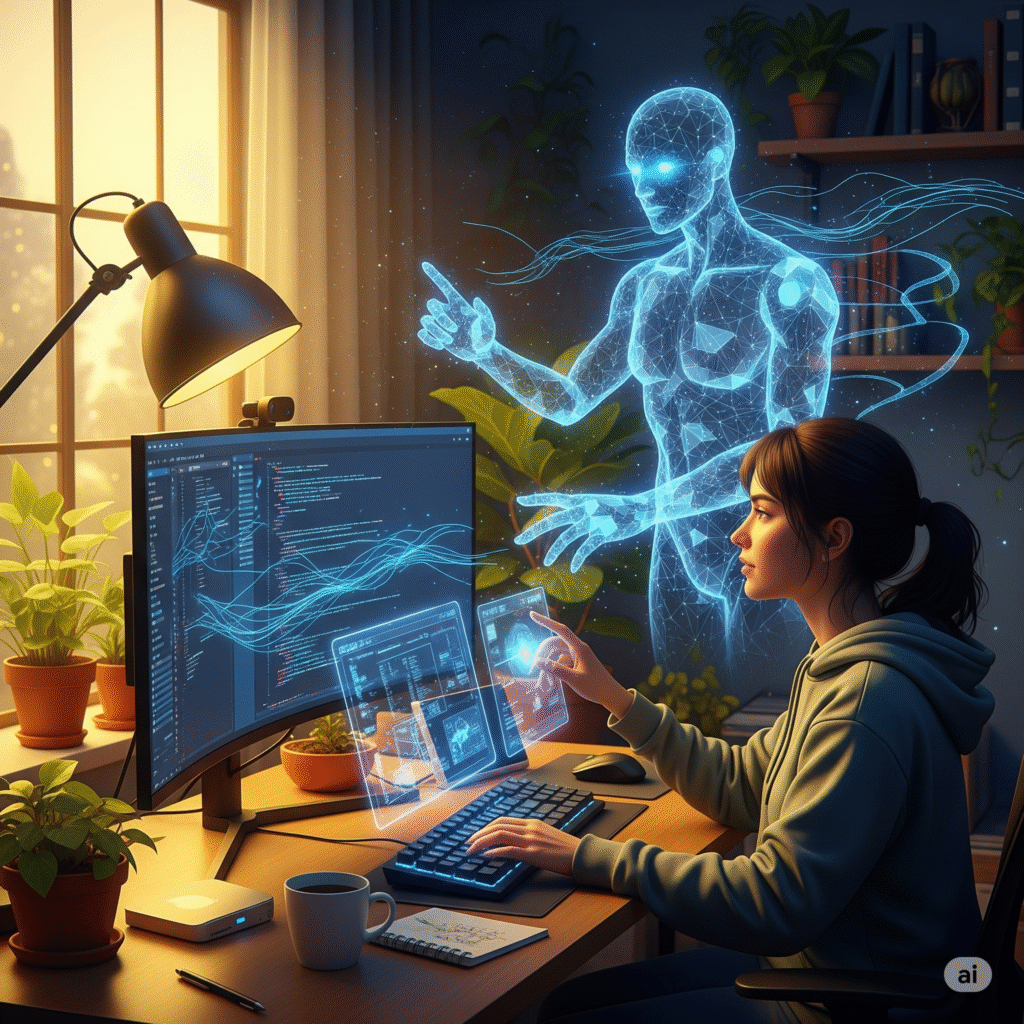By People You Think
Introduction
In the world of software development, new buzzwords come and go — but “Vibe Coding” is quickly becoming one of 2025’s most talked-about trends.
Unlike traditional coding, where developers carefully plan logic and structure before writing code, vibe coding embraces AI as a creative partner. Developers simply describe the feel or goal of the application, and AI tools generate functional code — often in real time.
At People You Think, we explore what vibe coding is, how it’s changing the developer workflow, and why it could be the next big leap in programming.
What Is Vibe Coding?
Vibe coding is AI-driven software development where the human developer focuses on intent, while the AI handles most of the code generation.
Instead of starting from scratch, developers provide:
- Natural Language Prompts — Descriptions of what the software should do.
- Design References — Examples of UI/UX styles they want.
- Functional Goals — Desired features and performance requirements.
The AI then produces working code — often with frameworks, libraries, and integrations already in place.

Why Vibe Coding Is Gaining Popularity
1. Speed of Development
Traditional coding can take days or weeks for prototypes. Vibe coding can produce functional drafts in minutes, allowing faster iteration.
2. Lower Entry Barrier
With natural language prompts replacing complex syntax, non-programmers can participate in building apps.
3. Creativity Boost
By offloading repetitive tasks, developers can focus on creative problem-solving and innovation.
4. AI as a Collaborative Partner
It’s not about replacing developers — it’s about enhancing their productivity with AI-assisted workflows.
How Vibe Coding Works in Practice
- Idea Definition
The developer explains the concept in plain language. Example: “I want a mobile app that tracks daily water intake and sends reminders.” - Prompting the AI
Using AI-powered IDEs or platforms (e.g., GitHub Copilot X, Replit AI, or Cursor), the developer feeds in the requirements. - AI Code Generation
The AI produces code in the chosen language and framework, often including UI elements, backend logic, and database connections. - Human Review & Refinement
The developer checks for bugs, security issues, and performance optimizations. - Iterative Adjustments
Feedback loops between developer and AI improve the final product.
Benefits of Vibe Coding
- Rapid Prototyping — Turn concepts into testable products almost instantly.
- Democratization of Development — Business analysts, designers, and entrepreneurs can contribute directly.
- Cost Efficiency — Reduces development hours and operational costs.
- Cross-Platform Output — AI can generate code for multiple platforms from a single prompt.
Potential Drawbacks and Risks
While vibe coding is exciting, it’s not without challenges:
- Code Quality Concerns — AI-generated code may include inefficiencies or hidden bugs.
- Security Risks — Automated code can unintentionally introduce vulnerabilities.
- Overreliance on AI — Developers risk losing deeper coding skills if they only use AI-generated solutions.
- Intellectual Property Questions — Ownership of AI-generated code can be legally complex.
SEO Trends Around Vibe Coding
Because vibe coding is still a fresh term, there’s high SEO potential for early adopters to dominate keyword rankings. Related search terms include:
- “What is vibe coding”
- “AI-assisted programming tools”
- “Generative AI in software development”
- “Low-code AI platforms 2025”
By targeting these keywords now, tech blogs and companies can capture growing organic traffic as interest spikes.
The Future of Vibe Coding
Vibe coding is likely to evolve alongside generative AI, low-code platforms, and autonomous coding agents.
In the future, we might see:
- Fully Automated MVP Creation — Startups launching products without writing a single line of code manually.
- AI-First Development Teams — Human developers focusing only on design, logic, and business goals.
- Industry-Specific AI Coding Assistants — Specialized tools for healthcare, finance, gaming, and more.
Final Thoughts
The rise of vibe coding signals a shift in how we approach software creation. While traditional coding skills remain valuable, AI-assisted workflows open the door to faster, more creative, and more inclusive development.
At People You Think, we believe vibe coding isn’t here to replace developers — it’s here to empower them to turn ideas into reality faster than ever before.
Meta Description:
Discover the rise of vibe coding — an AI-powered approach to software development that turns ideas into working code in minutes. Learn benefits, risks, and future trends.










